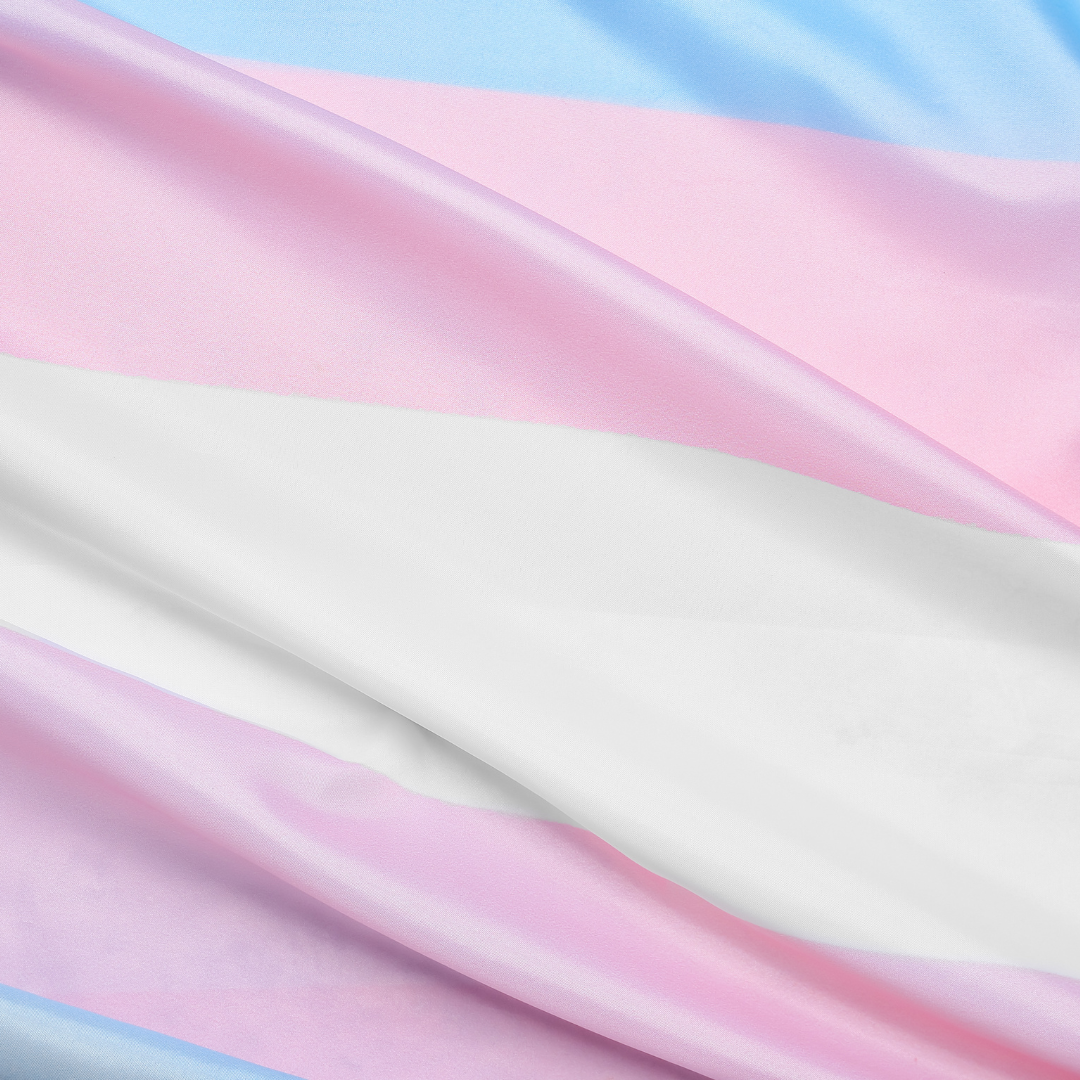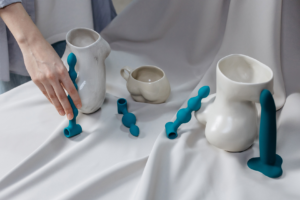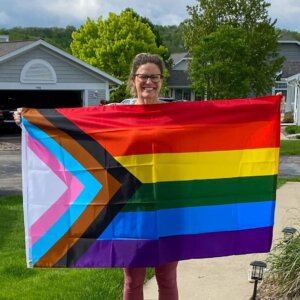
A Glossary of 43 Terms to Help You be a Better Transgender Provider
Congratulations! If you’re reading this blog, I take it that you’re ready to take the next steps to becoming a transgender inclusive provider.
As a pelvic floor provider, you may be seeing more and more patients who identify as transgender or gender nonconforming. In this blog, I am providing a glossary of terms that you may need to practice and learn as we provide care to more of these amazing humans.
What does it mean to be a transgender inclusive provider?
It is important that we, as doctors, take the initiative to fill in any gaps in our knowledge, preparedness, and awareness in order to best treat all patients. Every patient should come into your office or exam room feeling comfortable, welcome, and safe.
Unfortunately for transgender folx, that is often less likely to be the case due to struggles including:
- Trans-competent language barriers
- Compounding discrimination
- Lack of social or family support
- Mistreatment and violence
- Economic hardship and instability
33% of a surveyed group of 28,000 transgender people have been either harassed by a medical provider, denied medical care all together, or both.
Giving your transgender patients a space where they feel like they can be themselves ensures that you are able to provide them with the best healthcare possible; if they don’t feel comfortable it is likely that they are holding back from you and you may miss symptoms that could lead to a larger diagnosis.

A glossary of terms that may apply to transgender patients and treatments:
- Allosexual: when someone is attracted to another person, regardless of gender.
- Androgyne: someone who may possess both masculine and feminine traits
- Aromantic: or “Aro,” meaning someone who feels little to no romantic attraction.
- Asexual: or “Ace,” is someone who experiences little to no sexual attraction to others.
- back hole: term used to describe the anus
- Bigender: someone who experiences two genders
- Binding: tight fighting shirts, sports bras, or wraps to flatten the chest for those with larger breasts
- Bisexual: someone who is attracted to females and males
- body policing: done by someone who is policing another’s physical appearance because it is not what may be considered the social norm, or is not considered appropriate for a specific setting.
- Bottom: typically refers to someone who is in a more submissive role, or on the bottom, during sexual situations.
- Cisgender: someone who’s gender identity conforms with the gender they were assigned at birth.
- cissexism/genderism: the belief that cisgendered people’s expressions, gender identities, and embodiments are the “correct” approach to gender and sexuality.
- Demisexual: someone who does not feel a primary sexual attraction, but must first learn the personalities and characteristics of a person, then may become sexually attracted to that person.
- Femme: commonly used in the lesbian community, refers to a lesbian who’s appearance is more traditionally feminine.
- front hole: vaginal opening
- Gay: sexual and emotional attraction to someone who is of the same gender
- gender identity: a personal sense or conception of oneself as a specific gender, or lack of.
- gender non conforming: someone whose appearance does not conform with societal norms. Those who are gender non-conforming do not believe they should dress, act, or look male/female/like one specific gender.
- gender queer: someone whose gender identity or expression falls outside of the societal norm for their assigned sex at birth.
- gender unicorn: this term illustrates a spectrum of gender identities and expressions, showing that someone’s personality, clothing, or style and emotional/sexual attraction does not need to conform with the gender they are assigned at birth.
- Heteronormativity: the assumption that people are heterosexual at birth, and heterosexual people are superior.
- Heterosexuality: a sexual attraction to the opposite sex.
- Intersex: a person who is born with a combination of female and male genitals or chromosomal patterns
- Lesbian: someone who identifies as a woman or female, sexually attracted to another person who identifies as a woman or female.
- LGBTQIA+: the complete acronym used to encompass all sexual orientations and gender identities, which includes: Lesbian, Gay, Bisexual, Transgender, Queer or Questioning, Intersex, and Asexual. The plus is a symbol that was added to include members of the LGBT community whose gender identity or sexual orientation is not included.
- middle opening: an inclusive term for the vagina
- Misgendering: referring to someone using a gender or pronoun that does not correctly reflect their gender identity.
- Non-binary: a way of moving beyond male/female, and accepting that there many gender identities and expressions that may resonate with someone. People who identify as non-binary may also identify as gender non-conforming.
- Omnigender: someone who identifies with and/or possesses all genders.
- Packing: a term for wearing a padding or phallic object in the underwear or the front of one’s pants to give the appearance of having a bulge or a penis.
- Padding: undergarments that are used to create the appearance of hips, butt, larger breasts, or a penis
- pansexual/omnisexual: someone who is sexually, emotionally, or romantically attracted to someone regardless of gender identity or sex.
- Penis: external genitals or erectile tissue
- Phallus: another term for penis, especially when erect
- polygender/pangender: someone who varies between multiple gender identities or experiences at once
- Pronouns: refers to someone in the third person, includes: she/her/hers, ze/hir/hirs, he/him/his, they/them/theirs
- sexual orientation: the attraction or non-attraction, whether sexually, emotionally, or romantically, of someone to another person
- Top: the person in a dominate position during sexual encounters, typically physically on top of their partner
- trans/transgender: an umbrella term encompassing one’s internal knowledge that their gender identity is different than that assigned to them at birth.
- Transition: transitioning is the process by which a person takes the steps to live as the gender that they identify with
- Tucking: a technique that hides a crotch bulge or penis through clothing
- Two-spirit: a term used in Indigenous Native American communities to encompass sexuality and gender
- Vagina: internal genitalia
It is imperative that you not only take the time to learn these terms yourself, but teach all of the members of your institution or practice, including your support staff (I.E., receptionists, nurses, etc.)
When we use the wrong language, we are committing microaggressions. And while the component of the word “micro” makes the action seem small and insignificant, hear me when I tell you – it isn’t.
When you speak to someone using improper language, you are denying their identity and existence in this world. This cumulative effect is only amplified when it is coming from a provider, in which there is an inherent power dynamic.
As a medical provider, you swore an oath to Do No Harm. It is your duty to improve and expand your care, understanding, and – at a minimum – language of transgender folx and members of the LGBTQIA+ community in order to provide the best care possible to all patients.
I implore you to continue your research and learn more terms and additional ways to be inclusive.

Pelvic floor support for transgender folx
If you’re looking for a transgender inclusive provider for pelvic floor physical therapy, then look no further – I’m your gal!
To get started, be sure to book your FREE 20-minute discovery call where we’ll discuss your journey and symptoms in order to establish the best course of action for your pelvic floor dysfunctions. I also offer free resources on my blog, youtube, and instagram.
Looking for places where you can find trans inclusive providers for other medical issues? I’ve created a list of 14 places that can help!
More content you may like:
Some of the links on this page may be affiliate links. Laura Meihofer’s LLC is a participant in the Amazon Associates Program and others, as an affiliate advertising program designed to provide a means for sites to earn advertising fees by linking to products Laura organically uses and trusts. If you purchase a product through an affiliate link, your cost will be the same, but Laura will automatically receive a small commission. Your support is greatly appreciated and helps her spread her message!







Sorry, the comment form is closed at this time.